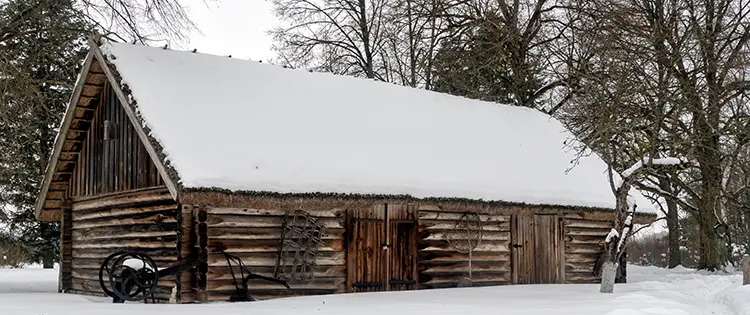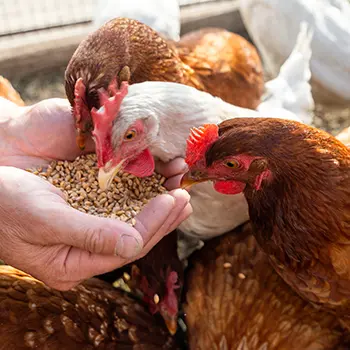With the Winter Solstice recently passing us by and pushing us into a snowy wonderland, we should probably take a look at how to be best prepared for these aggressively-sinking temperatures and all this ice headed our way. Things like firewood are obvious, but a few of these may surprise you. Let’s get started.
1. A Hair Dryer (or a heat gun)
“Now, why would I need that?” you ask.
Ah, friend. Let me tell you the tale of an author who just had her well freeze up because she forgot to drag the hose out of a stock tank located near the well house (which acted as a conduit for the cold directly into the pipes). You see, it was late and she was very tired. Where she lives? It isn’t often below freezing for more than an evening and certainly not the negative F digits that her farm was about to experience.
Needless to say, don’t be as silly as I was. A visit from the local well repairmen on Christmas-Freaking-Eve (I have lovely timing, friends) would have run us over $500. A hair dryer costs about $20 and it fixed everything right up. Heat pads or heat guns also work in this instance, though be sure not to run the heating pads so high that your pipes start to melt.
Don’t look at me like that; that one was my cousin.
Regardless, a simple hair dryer or heat gun will take care of all but the worst frozen pipes for you. Make sure you have one hanging around.
2. Nourishment
Settle in and cook a while!
Can your favorite recipes, enjoy hot tea and warm soups that make you snuggly from the inside out. The most important thing here is to keep 1-2 weeks of food on hand at all times- and that means for everyone you’re taking care of and yourself. There is always a possibility that you may be stuck in your home for a while, especially if you live in areas that don’t often get snow and you get a storm dumped on you.
3. Warmth
Though some of us love the cold (like me), it’s still nice to come into a house that’s cozy warm and to tuck ourselves in under blankets that feel as though they’re giving us a cuddly hug.
As I’m writing this, right now is one of the best times to stock up on blankets and warm clothes. Almost everyone will have right-after-Christmas type sales today and everyone will be trying to clearance all of their warm stock in favor of Valentine’s stuff and Spring-based stuff that will turn up on the shelves faster than any of us can believe. On the other hand, it’s been Christmas since September 20th, so maybe it’s time to look into that new year ahead of us.
Firewood, too, is a necessity for those keeping warm by fires; and many of us do. Look for hardwoods like hickory, birch, or fruit trees rather than pine, if at all possible. Pine leaves a lot of pitch all over the inside of your chimney and burns less clean.
4. The Cozy
In between the start of the very warm and very cold seasons, get your insulation checked (or check it yourself) and look at the weather stripping around your doors and your windows. Fix what needs to be fixed. I realize this is a little general, but we can’t possibly know the exact specifications of your home.
If you have a crawl space and there are missing vents, replace them so that you can close them to help protect your pipes, too.
5. Livestock Care
Two weeks of feed, including hay, should be present and safe at all times. This may mean storing it in your home if your current storage area is not completely pest and wet-proof. Remember that snow blows in easily around cracks in doors and can destroy good hay and haylage from the wet.
Our suggestion? Buy two weeks’ worth of feed on top of the rest of your weekly bill, then go ahead and store it through the snowy season.
6. Garden Care
Wrap sensitive plants in plastic or place temporary greenhouses over them. You should also consider heat tape for your seed starting mats if you’re the type that just can’t wait for spring to get here. If you have plants in your window, move them away when the freezing weather hits your glass; it can damage sensitive ones. Herbs should be fine.
7. A Healthy Glass of Patience
Winter can, at times, be frustrating. We are more adept at dealing with the heat than we are with the cold, regardless of where we live. Why? Because we can always bring ice out to the livestock or they can find shade and fans. We can always cool things down, but heating them up often requires one of two dangerous things; electricity or fire. Both of these can be scary things to work with on the farm and should be used with care.
So, if you’re finding yourself wanting to tear your hair out because the livestock guardian dog jumped the foot of a fence not covered by snow or it seems like it pours ice every time you clean off your roof, take a breather. Sit back, have a cup of tea, and rest for a minute before you get back at it.
8. A Spare Charger
Maintain a spare USB charger (or two) by plugging them in every couple of weeks and making certain that they’re fully charged. Not only will these help you charge a phone in case of an emergency, but they can also be very useful for personal heaters and a wide variety of other implements, too.
9. A Car Jump Box
Invest in a good car jump box/power pack and keep it charged every other week, just like the USB charger above. These usually cost a couple of hundred dollars at your local hardware or automotive parts store and will save you so much time and effort. Need to defrost a spigot and don’t have a blow torch handy? Grab your power pack and head out with the heat gun, plug in, and get to work.
And, if roadside assistance can’t get to you, you can still use these to jump off your car if it’s having trouble starting in the cold.
10. Plans
The most important thing for you to have this winter is a plan. A plan for animals being born, a plan for animals going down, a plan for what you’re doing in the spring, and a plan for what you’ll do in an emergency. There are so many things that can go wrong on a farm. Plan ahead as best you can and be ready for the craziness to strike when it’s cold, dark, and no one else is home; that’s the prime time for that kind of thing to happen.
Final Thoughts
Can you think of other things that you would suggest to others on their first homesteading winter? Tell us in the comments down below!
You may also like:
Fermented Foods You Should Eat This Winter
The Self-feeding Fire and other LOST Survival Skills We Will Need Soon (Video)
How To Keep Your Livestock Safe In Bad Winter Weather











